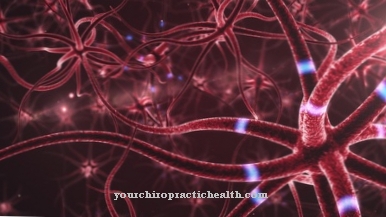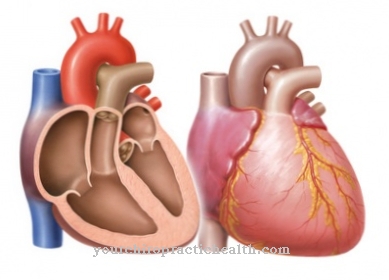In the opposition it is a movement of the thumb to face the other fingers of the hand. Movement is an important part of all grasping movements and is possible not only for humans but also for animals such as primates and birds. In the event of damage to the median nerve involved or of the spinal cord lesions in segments C6 to Th1, opposition may be impossible.
What is the opposition?

Grasping movements are part of everyday life. For these grasping movements, the opposition of the thumb is a crucial element. Or the opposition Opposibility of the thumb refers to its ability to face the wider fingers. Some animals can realize such a position not only with the thumb but also with the first toe.
The human thumb is sometimes exposed to the nature of its anatomical position. A person's thumb is twisted 130 degrees compared to the other fingers. This means that the so-called tweezer grip can take place between the thumb and one of the long fingers. In opposition, the thumb makes a movement that places the entire palmar side of the palm opposite the other fingers.
In animal species such as primates or birds, the exposability of the limbs of the feet or claws plays just as important a role as it does for humans, as it is only in this way that they can grasp certain food components.
Function & task
The thumb realizes its opposition movement through contractions of the opponens pollicis muscle. This muscle lies in the area of the thenar muscles and receives motor innervation from the median nerve. This is a mixed nerve made up of motor and sensory pathways that originates from the brachial plexus. The median nerve arises from the lateral fasciculus and medial to this plexus. Its fiber components come from the spinal cord segments C6 to Th1. Its original arms run in the distal direction. The nerve crosses the brachial artery near the insertion point of the coracobrachialis muscle until it is medial to it.
The median nerve runs along the medial elbow to the forearm, where it lies between the heads of the pronator teres muscle. Between the flexor digitorum profundus and superficialis muscles, it descends to reach the wrist. From there it extends into the palm of the hand under the flexor retinaculum.
In the palm of the hand, the median nerve becomes a lateral and medial branch. With one exception, the median nerve innervates the entire ulnar part of the flexor digitorum profundus muscle and is thus involved in the muscles of almost all flexors of the forearm. The muscles of the ball of the thumb, i.e. the thenar muscles, are also motor-innervated by this nerve.
The opposition of the thumb is carried out by the opponens pollicis muscle, which is one of the thenar muscles innervated. The muscle begins at the trapezium and the ligaments of the palmar wrist. Its short tendon runs obliquely in the distal and lateral directions.
The opposition of the thumb due to these two anatomical structures enables the human to grasp movements and to grip the forceps. Sometimes the little finger is also assigned an opposability. He can move through the opponens digiti minimi muscle in the direction of the palm, which in the broadest sense corresponds to an opposition. In the narrower sense, however, in human anatomy only the thumb is capable of complete opposition and thus of comparison with the rest of the fingers.
You can find your medication here
➔ Medicines for painIllnesses & ailments
The opposability of the thumb is only of value in clinical practice if it is limited or even failed. For example, if the median nerve is damaged, its conductivity can decrease. Damage to this nerve can be caused by mechanical compression of the nerve tract, for example in the context of accidents. On the other hand, any malnutrition or poisoning can also impair the conductivity of the peripheral nerves. Such impairment is referred to as neuropathy.
In most cases, neuropathies are secondary phenomena associated with a primary disease such as diabetes mellitus or chronic addiction to neurotoxic substances. In extreme cases, neuropathy of the median nerve can result in complete paralysis of the motor nerve. When such paralysis is present, the patient is no longer able to oppose the thumb.
The thumb cannot be opposed either if the mediating spinal cord segments C6 to Th1 are affected by damage. In the case of lesions of the spinal cord, there is talk of damage to the central nervous system. Such damage can be related to neurological diseases or also to tumor diseases, spinal cord infarctions or mechanical injuries to the spine.
The autoimmune disease multiple sclerosis is one of the neurological diseases. In this disease, the immune system incorrectly identifies the nervous tissue of the central nervous system as hostile and causes inflammation in it. This inflammation can affect the spinal cord in addition to the brain. In the spinal cord in particular, they often cause paralysis of certain muscles and can therefore also be responsible for paralysis of the thumb.
Opposition pain can also occur. For example, they can be due to inflammation of the structures involved. A fracture in the bones near the thumb can also be associated with pain, which is noticeable in opposition. More often, torn muscle fibers of the opposing thumb muscle cause the pain in the opposition.



























